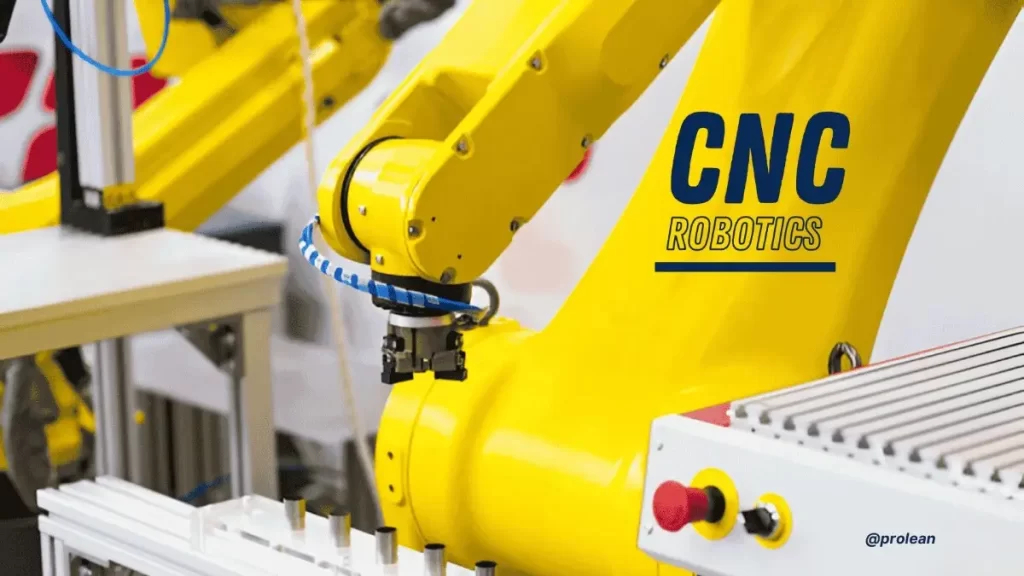
CNC Robotics
CNC robotics is making a significant impact in modern manufacturing. It integrates precision CNC machines with the flexibility of CNC robot arms that move like human arms. This powerful combo helps get work done faster, more accurately, and with fewer errors.
In this article, we’ll break down CNC robotics, how it works, and what trends are shaping its future. If you’re looking for fast, reliable CNC machining, Prolean Tech has you covered. With quality parts and quick turnaround times, we offer advanced CNC machining solutions. Keep reading to learn more and see how to get an instant quote.
What Is CNC Robotics?
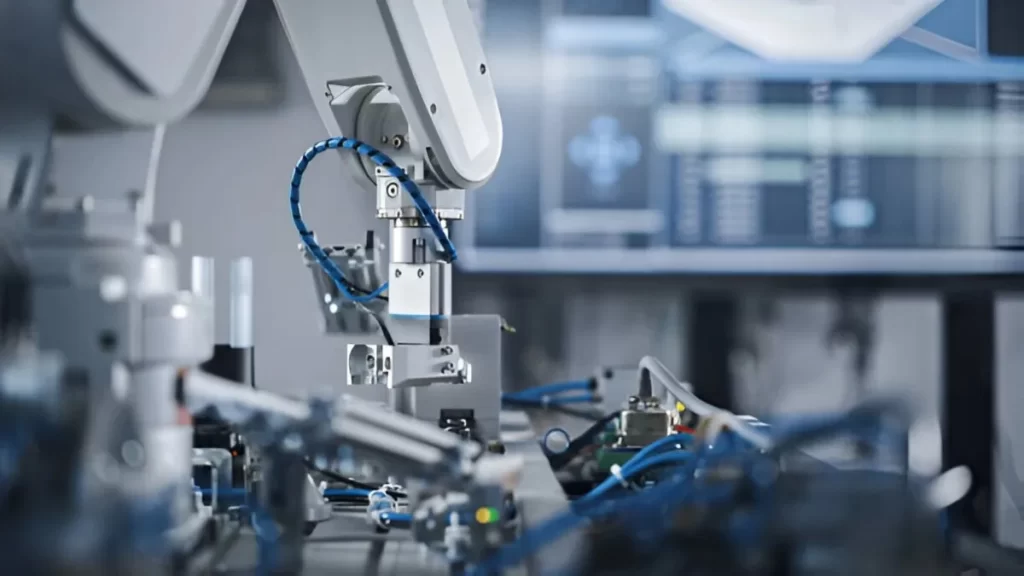
Cnc Robot Assembly Line
CNC manufacturing robotics combines robots and CNC machine tools. You have both precise results and the ability to change the format in one software.
Loading, unloading, and moving the workpieces are simple tasks for robots. It means less time is spent and manual work is reduced. It reduces mistakes when people do the same thing often or when it’s difficult.
CNC machining centers are not always set up with robots. People still have to manually move parts from one place to another in many areas. Several robots only take care of packing or organizing after the machining process.
CNC robotica are primarily found in places where many identical products are made. They allow production to be done faster, safer, and repeatably.
What Is CNC Automation?

CNC Automation
CNC automation means tools are typically controlled by CNC Programming. It can perform drilling, milling, turning, and grinding operations. Parts are shaped with high precision, and little manual intervention is involved. It is often used in aerospace, automotive, and medical manufacturing fields.
Modern CNC machines systems are better than old NC machines in terms of being flexible and thinking independently. Switching between programs makes it simple to do different parts of your model. It means fewer delays and more efficient production. CNC machines are more pricey, but you get better and more consistent results.
Motion control, loop control, and axis control are the major types. The systems use your program to guide tools to cut and move. That makes the machine keep its results reliable, unchanging, and efficient. On a lighter note, CNC automation controls tools to machine parts precisely. And, CNC robotics adds robotic arms for flexible movement. Robotics helps with multi-axis motion and material handling.
Why Use CNC Robotics Over Traditional Manufacturing Methods?
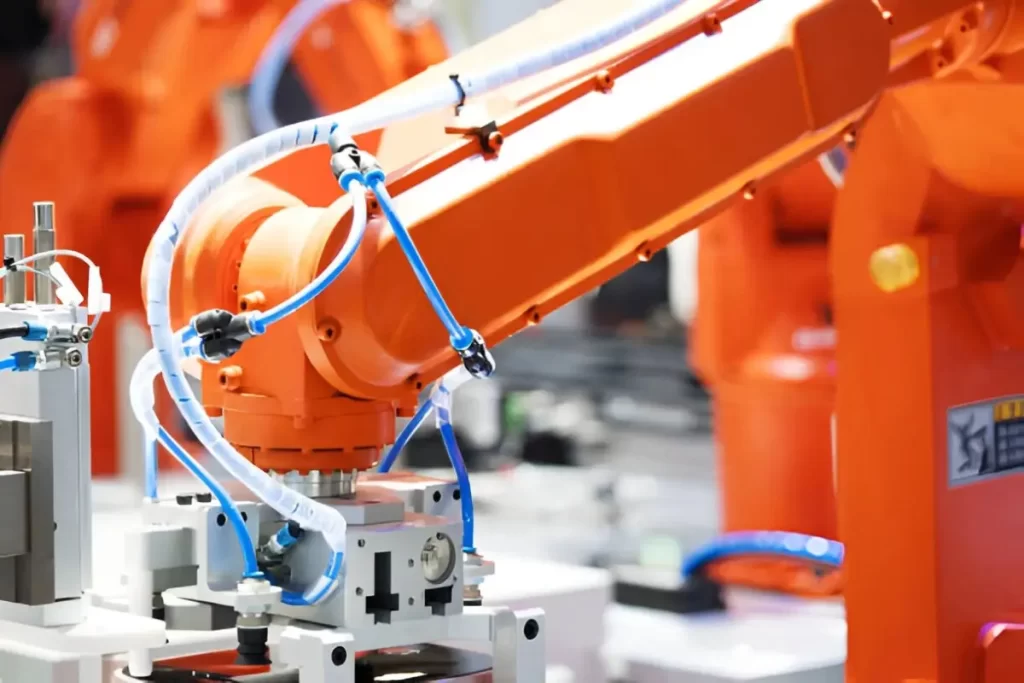
Robotic Arm
Time and money are always needed when you switch to CNC robotics. You must buy new tools, hire or train the people handling them, and plan well. Usually, the benefits are greater than the effort required. CNC robotics helps factories work faster, more accurately, and safely.
Automation
CNC robots keep going 24/7 without stopping for breaks. You can make more products in a minimal time. For large-scale manufacturing, always keeping the lines running is very useful.
More Precise Results
Robots follow CNC G-code instructions exactly every time they operate. With sporadic defects, they consistently give precise outcomes. Relying on automation keeps the product or service quality unchanged over the shifts.
More Flexibility
It is easier to change the programming of a CNC robot to do various jobs. In one day, they can process aluminum; another day, they work with titanium by switching tools. Being adaptable makes producing good items for small and custom orders possible. Because of this, you do not experience costly downtime during changes.
Cost Effective
CNC robots are costly but help companies save in the long run. They help reduce material waste and downtime. Also, your workforce becomes more productive, with fewer errors to correct. Gradually, having such savings makes robotics a good decision for businesses.
Manage complex Assignments
CNC robots meet job requirements that humans and traditional machines cannot meet. They often need to work closely together or do many steps simultaneously. Because of this, you can produce parts more efficiently than you were able to before.
Safety
Robots are usually used for dangerous jobs, like working with heat or sharp objects. Employees are better protected, and accidents can be avoided. When properly integrated, robots can significantly enhance workplace safety by handling hazardous tasks.
Try Prolean Now!
CNC Machines and Robots: What Are the Differences?
CNC machines and robots often look very much alike. They depend on computer software to direct what they do. At the same time, several points make them different in manufacturing.
CNC Machines Cannot Do Every Type of Job
CNC machines perform machining tasks primarily. They use cutting, drilling, or milling tools according to the plan. Most CNC machines only do one or two processes. A CNC drilling machine is limited to drilling; it must be set up differently for milling or turning.
Although robots have greater overall flexibility, they can pick up things, move them, machine them, weld them, or cut them as part of one program. Robots can switch between tasks quickly and adapt to various shop-floor applications.
A CNC Machine Requires Human Supervision
Operators must put parts in, run the CNC machining, and remove the finished products. Employees are involved along the way to maintain the smooth operation of their jobs.
Robots can assist humans by working together, and they can also operate by themselves. Therefore, robots working in teams with humans can do their tasks safely.
Robots are More Skilled at Doing Different Tasks
It is easy for robots to move from one job to another rapidly. They can easily do tasks like assembly, welding, and material handling. Because software is flexible, work is done faster and with fewer errors.
CNC machines are great at making large quantities. They are excellent for large numbers of the same products because they work perfectly every time.
Different Varieties of CNC Industrial Robots
Most industrial robot are designed to perform specific tasks. Many industries count on CNC robots because of their usefulness for machining. Here are the most commonly used industrial robots given below;
Cartesian Robots

Cartesian Robot
Cartesian robots are also known as gantry robots. These can only travel along the X, Y, and Z axes. They are beneficial for simple actions such as putting and removing parts. These robots are suitable for tasks that require straightforward motion.
Articulated Robots
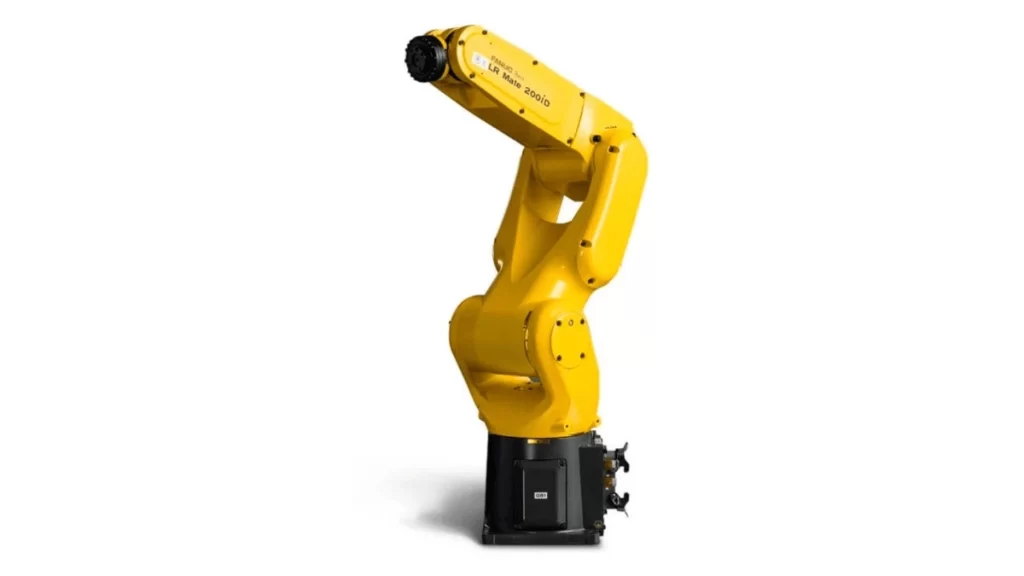
Articulated Robot
An articulated robot has many hinges, like the joints in a human arm. It helps them travel in many ways. Most factory robots have articulated robot arms. They work on many tasks such as welding, painting, and jobs that require highly flexible movement.
SCARA Robots
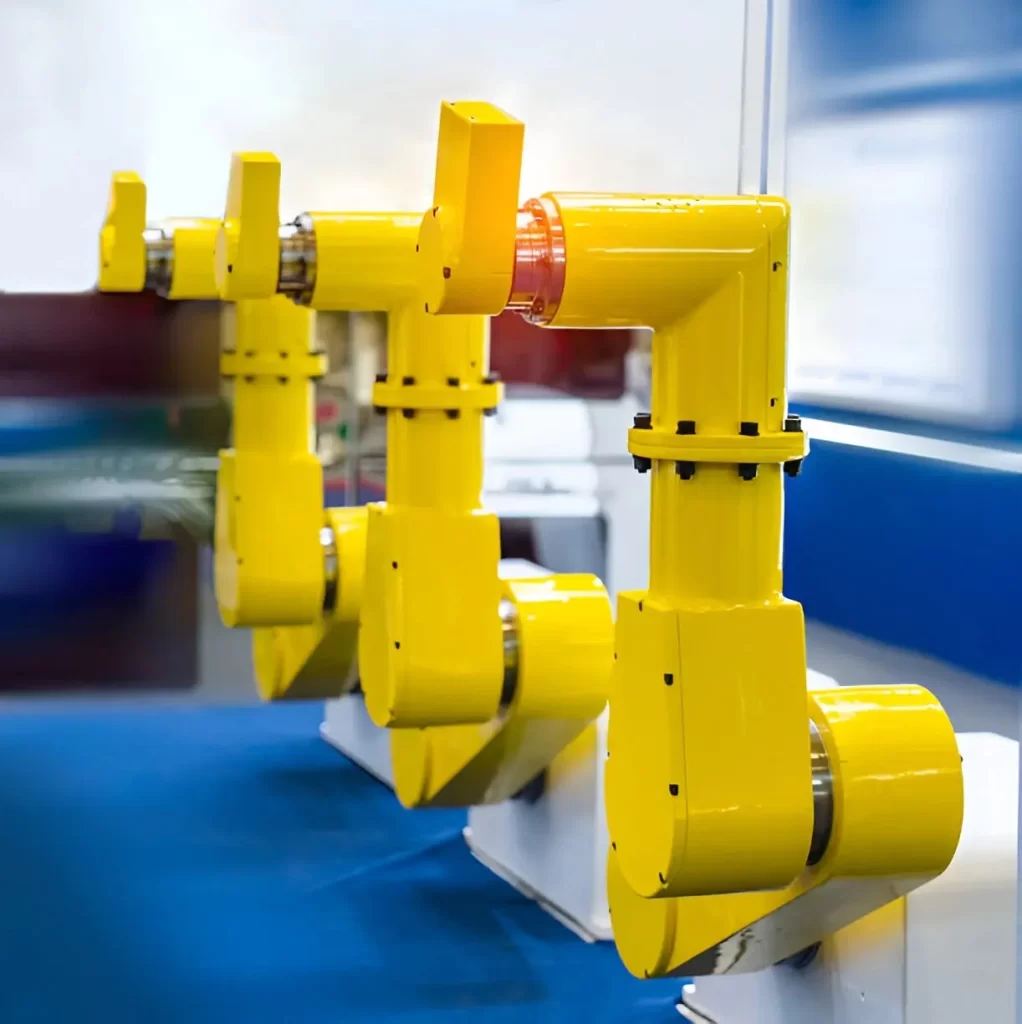
SCARA Robot
SCARA (Selective Compliance Articulated Robot Arm) robots excel in fast, precise vertical assembly tasks due to their rigid vertical motion and compliant horizontal movement. People usually use robots in tasks where speed is a key factor, such as assembly and material management.
Collaborative Robots
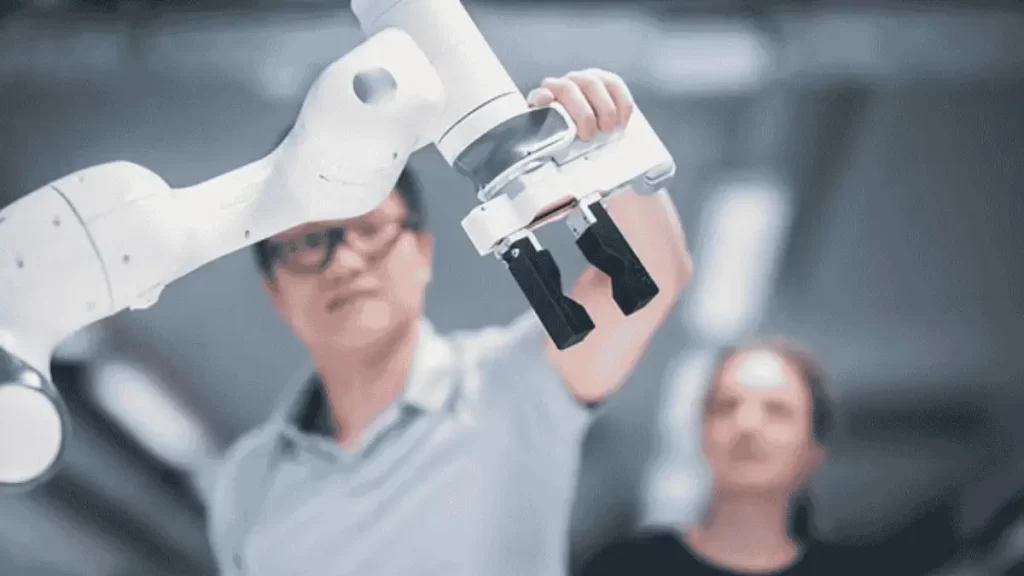
Collaborative Robot
Collaborative robots, or cobots, are valuable for assisting with repetitive or precise tasks. However, they still cannot match the creativity and intuition of humans. Cobots can be used in tight areas and come with safety measures for workers. They work well when humans and robots have to work side by side.
Selecting the Correct Robot
All robot types have characteristics they are good at, as well as things they cannot do. Manufacturers must choose a robot that fits their specific needs. What the project involves and the needs of the machining shop will shape the right choice.
See Also: Milling Machine Vs. Lathe
Try Prolean Now!
What Tasks Do CNC Robotics Perform?
Manufacturing companies use CNC robots to do many types of work. For example, medical robots assist in surgery, rehabilitation, and diagnostics. They do various jobs such as cutting, milling, and welding. Work is completed faster and with high accuracy.
Robotic Machining and Milling
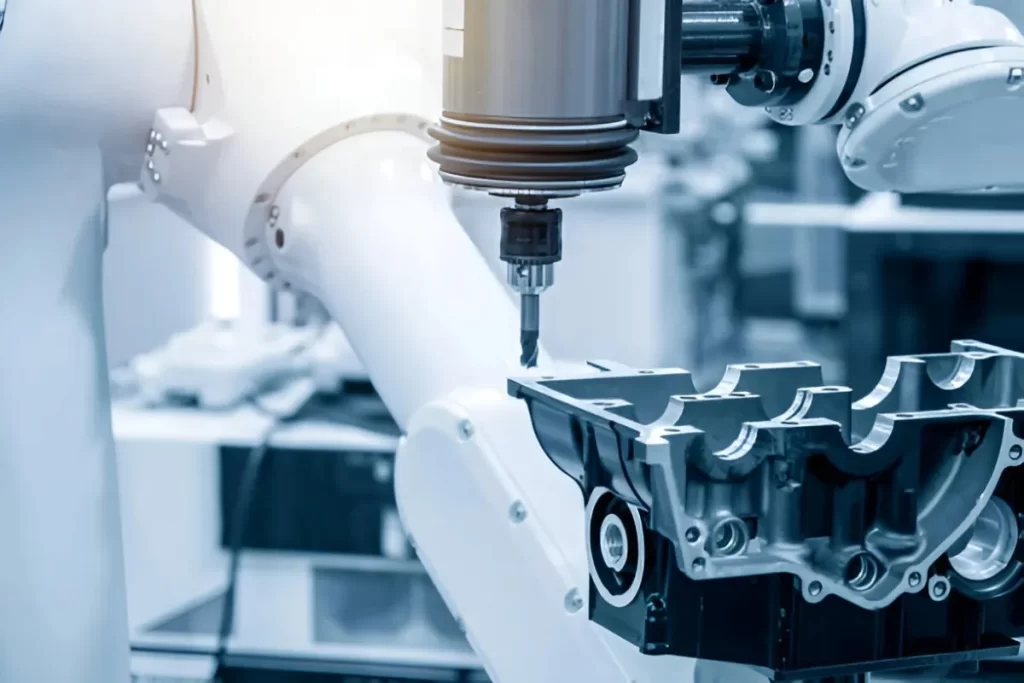
Robotic Milling
It is possible to change the design in robotic machining quickly. Robots can work on significant parts or unusual shapes. Therefore, the automotive and aerospace industries benefit a lot. They can get to areas that regular machines do not have access to. Robots hold milling tools and carefully cut the components. You can make all sorts of shapes simply by combining basic ones.
Large-Scale Production
Robots keep working without ever taking a break. They are always of the same high standard. They can make many pieces quickly. Mistakes are reduced because robots run according to precise instructions. Besides making parts, robots assist with checking parts for their condition.
CNC Robot Routing
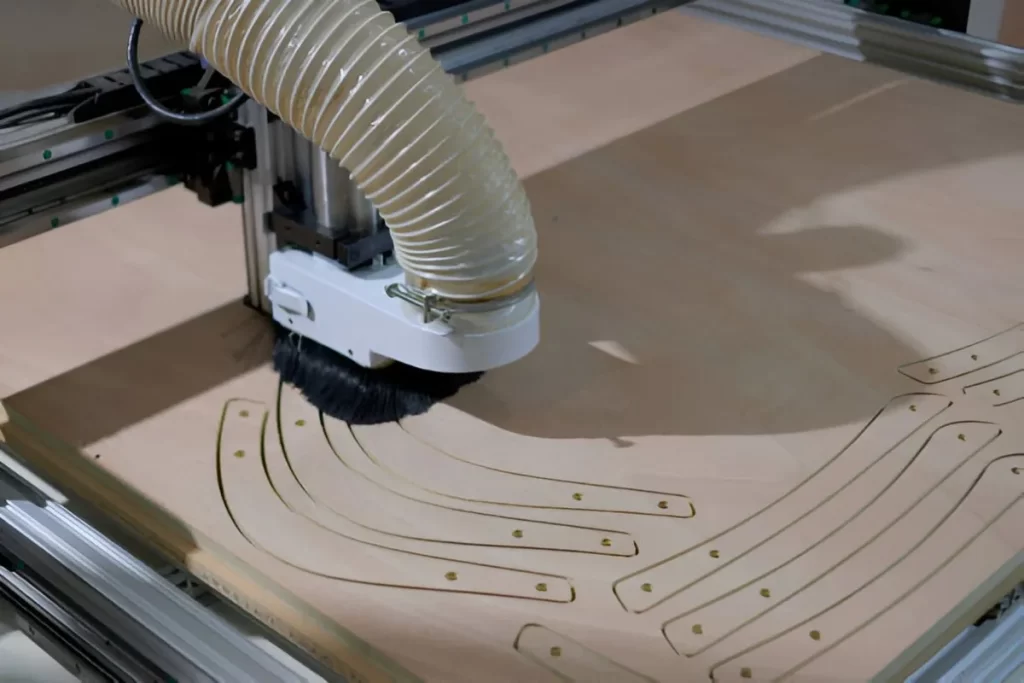
Robotic Routing
Many robot routers can work with wood, metal, and plastic materials. They suit small furniture and pieces of plastic well. You constantly get accurate and smooth results.
CNC Robot Welding
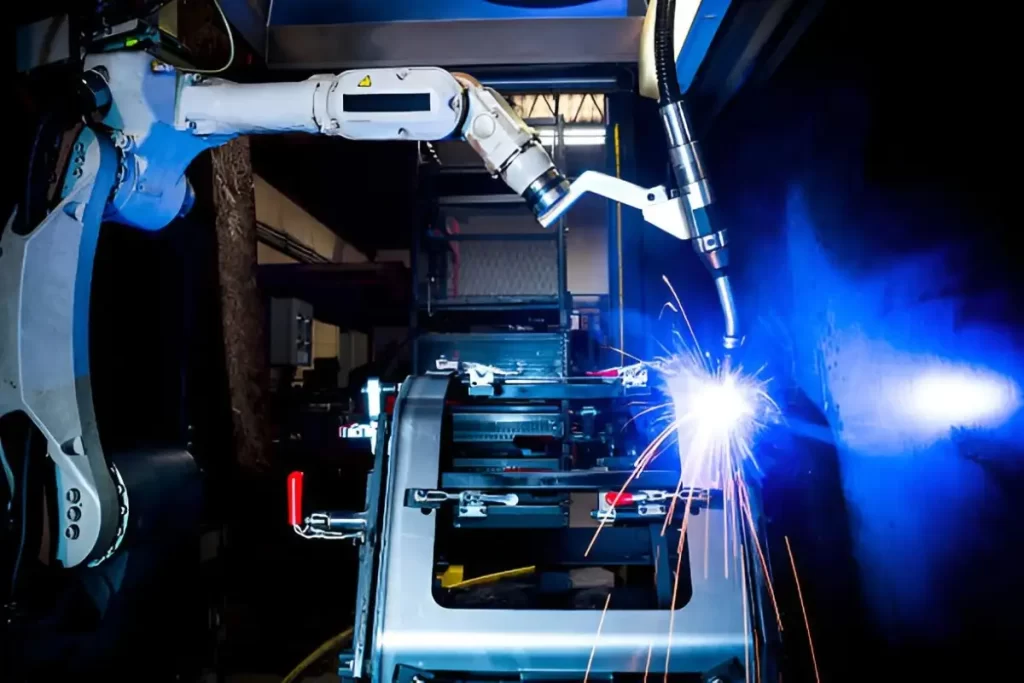
Robotic Welding
Robot welders move along a planned course, which is strictly followed. It ensures that the welds on every piece are the same and very strong. They make car and airplane parts safer and of better quality. Robots can handle welding jobs that call for accuracy and regularity.
Key Trends in CNC Robotics
There is rapid progress in the CNC robotics area. Changes happen because of new technological and industrial needs. The following are major trends affecting the years ahead.
Artificial Intelligence (AI) and Machine Learning
AI and machine learning make CNC robots more efficient. AI enables robots to optimize processes through adaptive control and predictive analytics. Machine learning lets robots learn using data and improve as they go along. So, things will be kept in better shape and operate more smoothly.
Collaborative Robots (Cobots)
Cobots can work safely with people. Such machines support jobs where people need to move materials safely. Cobots share the workload with employees, which reduces fatigue and mistakes. Because of this, factories are safer and work better.
Soft Robotics
Soft robots are made with flexible materials instead of rigid metal components. These robots move easily and hold things that are either delicate or oddly shaped. This is good for parts or products that a rough touch could damage.
Swarm Robotics
Many robots are used and programmed together in swarm robotics. They partner to complete big or complex tasks more quickly. Because of teamwork, large parts or structures can be produced in big factories.
Get Custom Robot Parts: Trust Prolean for Quality and Precision
Robot parts need exact machining to work perfectly. Mistakes can lead to poor quality, wasted materials, and lost time. The best way to avoid this is to choose skilled professionals.
Prolean is your trusted partner for custom robot parts and comprehensive CNC machining service. Our experienced team uses advanced machines to deliver precision machining, 5-axis CNC machining, prototype machining, and more. Whether you need custom robot parts or other complex components, Prolean is here to help. Contact us anytime to get started!
FAQ’s
Q1. What is CNC in robotics?
CNC in robotics means using a robot to do precise cutting, drilling, or shaping tasks. The robot follows computer commands to move precisely as it’s programmed.
Q2. What is the difference between CNC and robotics?
CNC machines are made to shape materials using set movements. Robots can move freely and do tasks like handling, loading, or assembling.
Q3. What is the cost of a CNC robot?
A basic CNC robot can cost around $25,000 or more. Advanced models with custom features may exceed $100,000 depending on your needs.
Q4. What is the advantage of a robot arm?
Robot arms can work fast, repeat tasks perfectly, and never tire. They also help improve safety by handling dangerous or heavy parts.
Q5. What are the main advantages of integrating CNC technology with robotics?
You save time and increase accuracy by combining both. This setup also reduces manual labor and helps run production with fewer errors.

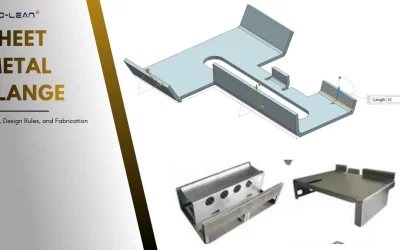
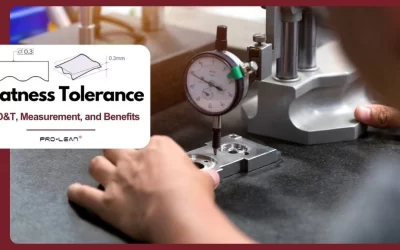

0 Comments